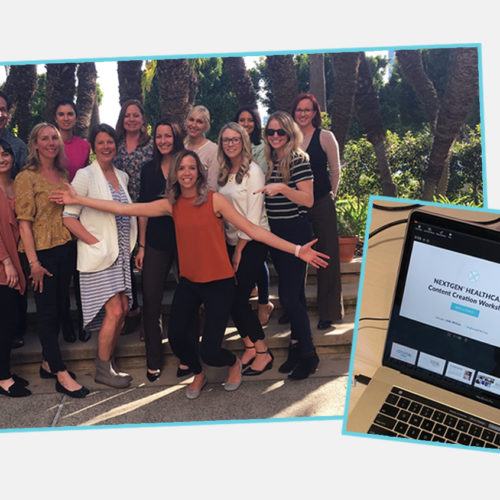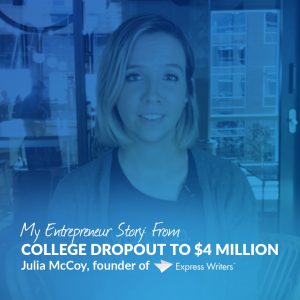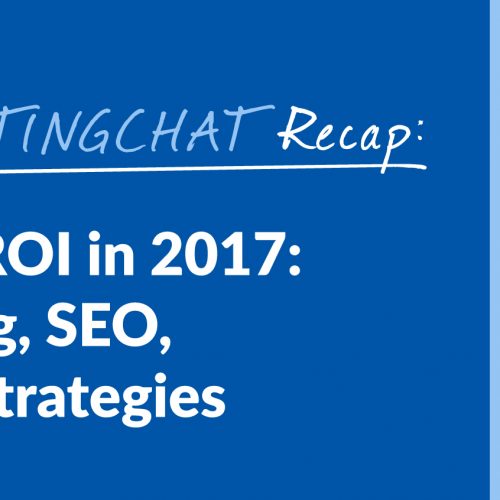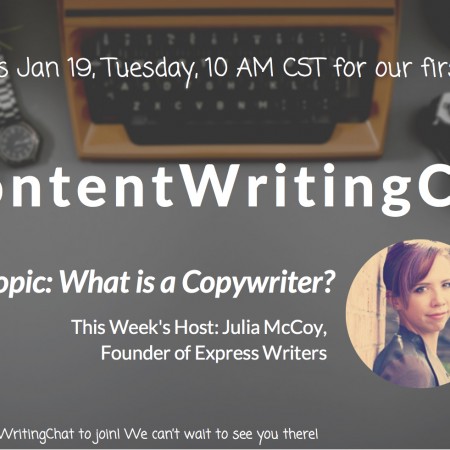The 7 Do Not’s of SEO in 2019 and Beyond (Search Engine Journal Webinar Recap)
SEO to content is like paleo chocolate frosting to a paleo chocolate cake. (Ever had one of those? They’re decadent, AND good for you. ) It seriously is that important–and impactful–in content marketing. SEO-focused content marketing has powered our own organic marketing at Express Writers for years. Without good SEO practices, your content will miss out on the possibilities of earning traffic and leads through organic user searches. The opposite, bad SEO, will make readers and Google look a little like Steve Carrell in this scene in the 2014 movie, Alexander and The Terrible, Horrible, No Good, Very Bad Day: Not good. That’s why, this April, I presented a webinar for Search Engine Journal on the top seven bad SEO tactics to abandon forever – ones that are dragging down your search rankings, confusing users (see above photo), and leaving your content in the dust. We had an amazing turnout for this webinar. Over 300 people tuned in live! Here are the slides from my webinar, and here’s the YouTube replay. For those who missed it, or those who want the highlights, keep reading – I’m recapping the major points, here, too. ✔ Before we get into the bad SEO tactics and practices people are still using, we need to answer one question… [bctt tweet=”Get your own content marketing all geared up for the ROI you’ve been waiting for with the help of good SEO. Watch @JuliaEMcCoy’s @sejournal webinar about the 7 Do Not’s of #SEO in 2019″ username=”ExpWriters”] Why Does SEO and Google Matter? Two reasons: 1. Most Internet Users Rely on Google About half of the world’s population uses the internet. That’s no joke. Of those internet-users, about 60% begin their browsing with a Google search. Over 3.5 billion Google searches happen in a day. Plus, Google dominates the market. Almost 60% of all web traffic begins with a Google search, according to the data from SparkToro and Jumpshot. Image: Backlinko 2. Google is All About the User Most web traffic comes from Google, and Google is all about that end-user. From their Search Engine Evaluator Guidelines to their Webmaster Central Blog, the user experience takes center stage. When your SEO and website experience tick off human users, you tick off Google, simultaneously. Therefore, good SEO practices are all about keeping users and Google happy. The better you do, the more highly you will be ranked in search (and loved by users!). With that out of the way, let’s get into the bad SEO tactics that will make your two most important audience members (humans and Google) confused, annoyed, and fed-up. [bctt tweet=”SEO-focused content marketing has powered our own organic marketing at Express Writers for years. Know why SEO matters with @JuliaEMcCoy’s @sejournal webinar about the 7 Do Not’s of #SEO in 2019″ username=”ExpWriters”] 7 Just-Plain-BAD SEO Tactics You Shouldn’t Be Using Anymore 1. Using Your Target Keyword the Wrong Way An outdated SEO practice we need to do away with is targeting one keyword per page – especially similar or semantically related keywords. Instead, it’s better to target both focus keywords and secondary, related keywords in the same piece of content. This will align your SEO strategy with modern semantic search, which is what Google is focusing on moving into the future. Semantic search looks at a page’s overarching topic vs. individual keywords to determine whether it’s relevant to a user’s search query. On the right side of this diagram, each keyword is targeted individually. A better SEO practice is to target related terms like these within the same piece (left). Using a focus keyword + variations, related terms, and synonyms all within the same high-quality content piece signals to Google AND users that the page is topically relevant to the search query. 2. Developing Thin Content That Doesn’t Go the Distance Short, thin content pieces are not SEO-worthy. If you want a page to rank, you need longer, in-depth content. How do we know? Look at the data: From BuzzSumo’s analysis of over 100 million articles, long-form content (over 3,000 words) was most-shared. A Backlinko study came to the same conclusion – long-form content = higher search rankings. To write longer content, focus on answering the user’s question(s) thoroughly and deep-dive into your topic. 3. Posting Content Whenever You Feel Like It You can’t post content erratically if you want to rank higher in search. Many studies have shown that consistently publishing high-quality content leads to more ranking opportunities. For one example, a HubSpot benchmark study found that companies that posted over 16x/month earned the most traffic and leads. That doesn’t mean you need to start blogging like a madman (or madperson), though. If you push out tons of posts but your quality sucks, you still won’t get anywhere. That leads us to bad SEO tactic #4… 4. Focusing on Quantity Vs. Quality Pushing out blog posts just to get them on the web is never a good idea for SEO. Quality matters more than quantity for rankings and readership. If you can’t feasibly publish fantastic blog posts on a consistent basis (say, 2-3x/week), cut back. One amazing post per week or month is better than 3 mediocre or crappy ones. Tip: Check out the top 5 search results for your focus keyword in Google. Try to create a post that’s better than anything in that top 5. 5. Publishing Duplicate Content According to SEMrush, a study of over 100,000 articles showed the most common SEO error is something we can all easily avoid: duplicate content. Nearly 66% of the articles in the study suffered from this problem. It happens when multiple pages appear very similar or match 100%. Usually, this is unintentional, but some people do plagiarize content. Either way, you will be penalized. Luckily, this mistake is easy to avoid. Do it by running all of your content through Copyscape before publishing. Rewrite any pages that have a percentage match. 6. Using Shady Tactics like Link Buying If you really want to get on the wrong side of Google, link schemes and link … Read more









